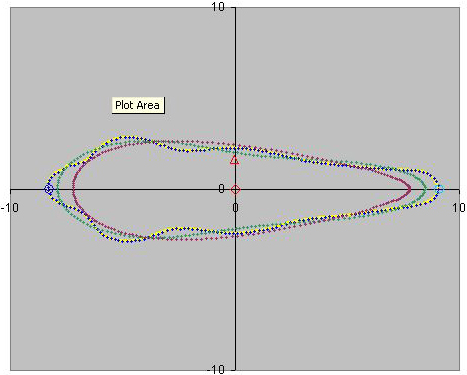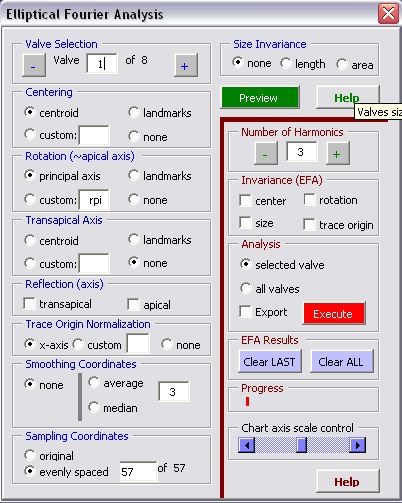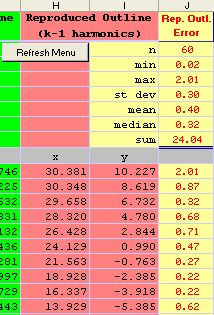|
Option Selected
valve specifices an EFA be conducted on a single selected valve (see
Select Valve Frame) which displays the Fourier coefficients and the harmonic
amplitudes on the EFA worksheet and then plots the reproduced outlines
using k [worksheet columns F & G] and k-1 [worksheet columns H &
I] harmonics [k is the number of harmonics used in the analysis ("Number
of harmonics" frame above)] along with the original and smoothed-and-sampled
outlines. The colors of the chart points correspond to colored columns
on the EFA worksheet holding the respective outline coordinates.
Option All valves
specifies EFAs on all valves in the data set on the ImportOutline worksheet.
No graphic output occurs during this processing, except for updating of
the Progress Bar, unless the Export box is checked. No tabulated output
occurs to the EFA worksheet, except for coordinate columns B to I.
Selecting
Export causes the EFA results of either a single valve or all valves
to be written to two worksheets. Data exported to the EFAResults worksheet
include basic valve identification and descriptive information, processing
modes, Fourier coefficients and harmonic amplitudes. Data exported to
the EllipDescr worksheet are basic valve identification and descriptive
information, processing modes and the elliptical descriptors of Schmittbuhl
et al. (2003).
The EXECUTE
Button executes the EFA using the smoothing, sampling, normalization and number
of harmonics chosen for either a "Selected valve" or "All valves."
Reproduced outlines
are not stored but are generated independently.
| 

